I have been playing with a SFH 213 photodiode (the clear one) and I've hooked it up to a TLV2371 op amp so as to resemble an ordinary transimpedance amplifier.
I've varied the feedback resistor value from 10M-30M and still I get zero voltage from V_out. According to the data sheet for the photodiode the dark current is 1(<5)nA so I figured with 10M resistor I would get 10-50mV at the output.
I've tested other configurations with the op amp such as a non-inverting amplifier and it works just as expected. So I don't think the op amp is broken. I also hooked up 2 photodiodes (parallel) in case the one I was working with was broken and to make the signal stronger but still no output. The flat side of the diode is facing pin 2 (-in) and the round side is in pin 3 (+in) which is grounded. The +9 Vcc for the op amp is completely arbitrary value.
I feel like it's a simple issue and I feel silly for asking. However I just can't figure out what's wrong.

simulate this circuit – Schematic created using CircuitLab

